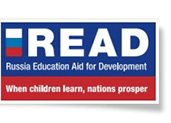This second edition of the SDG 4 Scorecard produced together with the UNESCO Institute for Statistics (UIS) shows the efforts that countries have been making towards achieving their 2025 and 2030 national benchmarks. It was launched at the UNESCO Conference of Education Data and Statistics, which brought together education statisticians from over 125 countries and recognized and celebrated their contributions to the benchmarking process.
The report shows that progress towards benchmarks is strong on connecting primary schools to the internet and on ensuring pre-primary school teachers have minimum required qualifications, but is significantly more off track for the other six benchmark indicators.
Of note are slow progress in reducing out of school rates in lower secondary: As many as 40% of sub-Saharan African countries with data have made no progress since 2015.
In addition, there is a lack of data on learning proficiency to enable effective monitoring: Across primary and secondary levels, there is no data for 680 million children.
Countries are moving backwards on closing gender gaps in upper secondary completion, when they have started from a position where boys are at a disadvantage, and on public education expenditure.
An Africa version of the SDG 4 Scorecard was released in time for the AU Summit this month, which marked 2024 as the African Union Year of Education. It showed that, by 2025, African countries intend to halve their primary out-of-school rates to 11% and to ensure that 46% are reading with proficiency at the end of primary school. They have also committed to ensuring that 79% of teachers will be trained at the pre-primary level and 85% at the primary level.
To learn more follow the link: unesdoc.unesco.org/ark:/48223/pf0000388411







